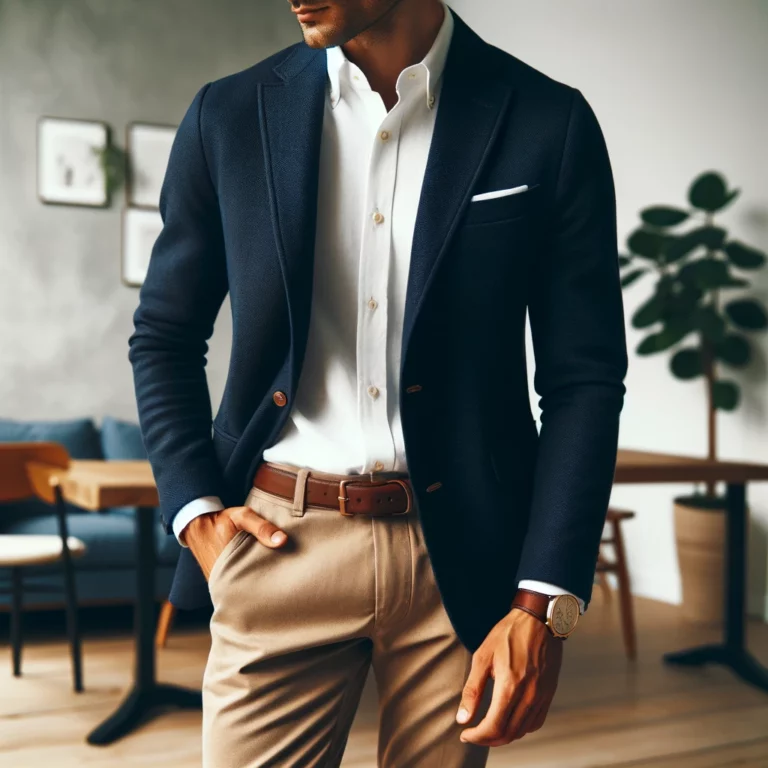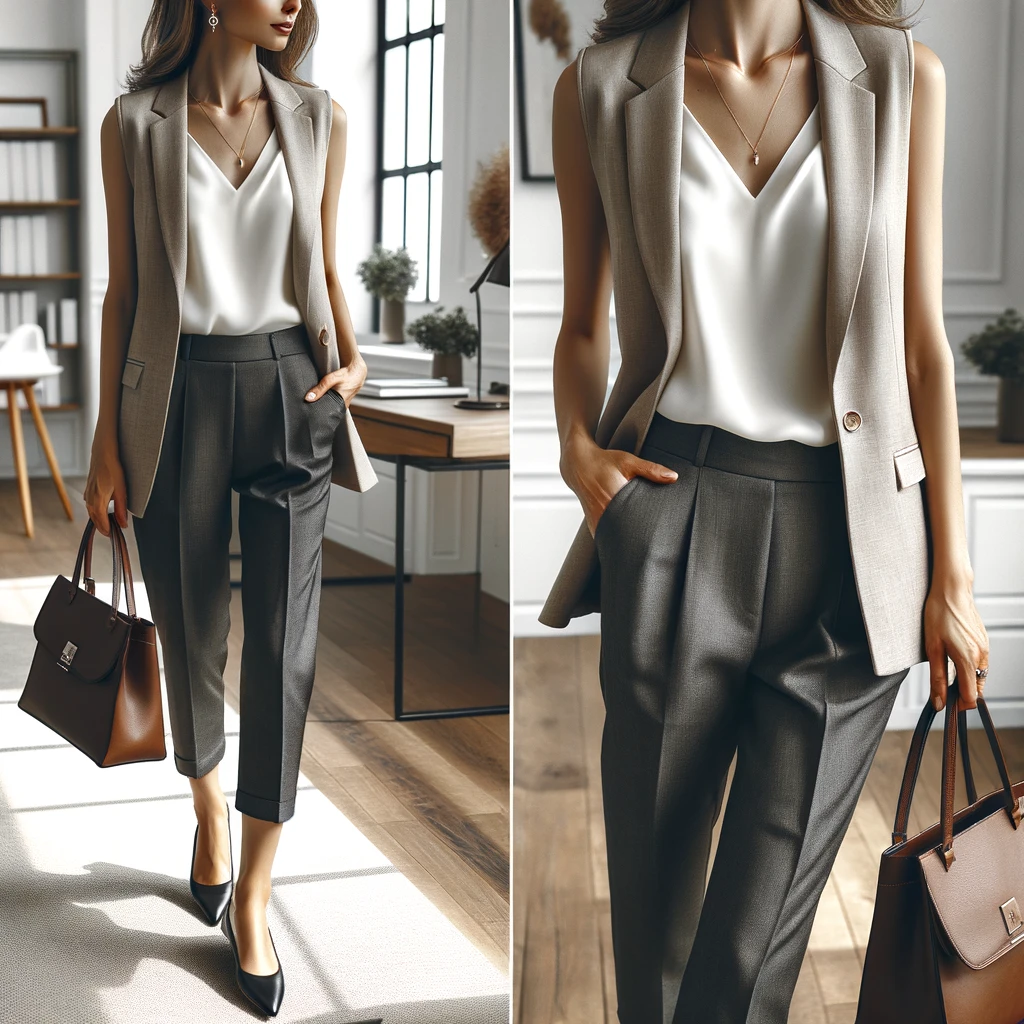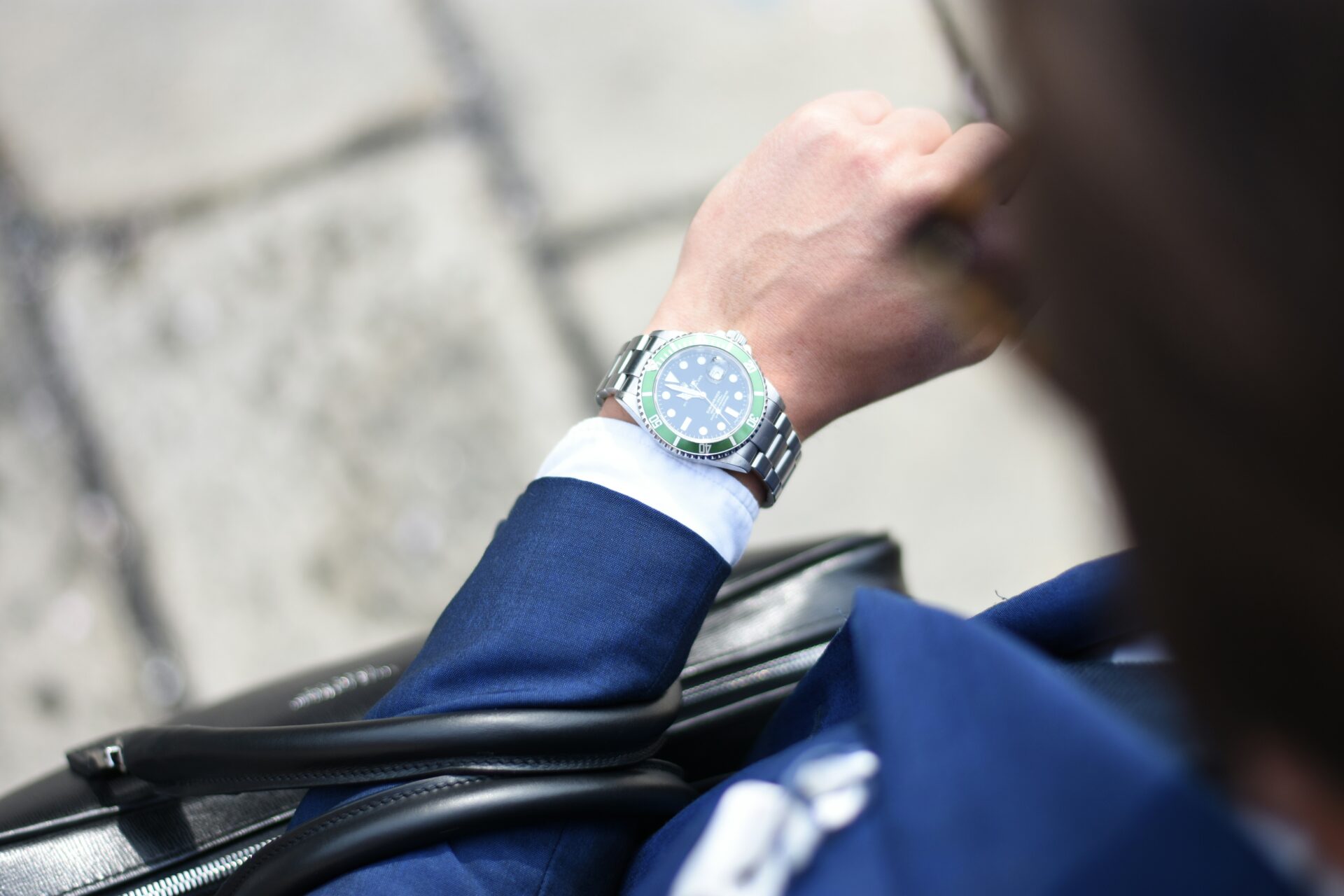Table of Contents
ToggleBusiness casual is a popular dress code in many modern workplaces, striking a balance between formal business attire and more relaxed, casual wear. This dress code allows employees to look professional while feeling comfortable and is often adopted in offices where creativity and flexibility are valued. Understanding what constitutes business casual and how to dress appropriately can enhance your professional appearance and confidence.
Business casual attire is less formal than traditional business wear but still professional enough to maintain a polished appearance. It blends elements of both business and casual styles, providing more flexibility in clothing choices. The key is to appear neat, professional, and put-together without the formality of a full suit and tie.
Tips for Business Casual Dressing
1. Understand the Company Culture
To effectively understand the company culture regarding business casual attire, observe what colleagues and supervisors wear daily as a practical benchmark, review the company’s dress code policy in employee handbooks or onboarding materials to know specific expectations, ask managers or HR representatives for clarification if unsure, and stay informed about any changes to the dress code, as these can evolve, particularly in dynamic industries.
2. Prioritize Comfort and Fit
Maintaining both confidence and professionalism through comfort and proper fit involves several key strategies: invest in tailored clothing that fits your body shape well, enhancing both appearance and comfort; choose breathable, stretchable fabrics like cotton, wool blends, and synthetics for ease of movement and a polished look; avoid extremes in fit by steering clear of clothes that are too tight or too baggy; and use layering, such as adding a light sweater over a button-down shirt, to adapt to varying office temperatures.
3. Select Neutral and Muted Colors
Selecting the right colors is essential for projecting professionalism in your attire. Neutral colors such as navy, black, gray, and beige are versatile, facilitating easy mixing and matching of various pieces and conveying a polished, understated look ideal for maintaining a professional image. While these neutrals should form your wardrobe’s foundation, adding subtle accent colors through accessories or secondary clothing items can provide a personal touch. Strive for a cohesive color palette to simplify outfit coordination and ensure a consistent professional appearance.
4. Incorporate Classic Pieces
Classic wardrobe staples are essential for business casual attire, offering both timeless style and flexibility. Key pieces include quality blouses and button-down shirts in solid colors or subtle patterns like stripes or checks, which provide a polished look. Well-fitted chinos or dress pants in neutral colors are versatile and can be paired with various tops for different professional looks. A well-tailored blazer adds a touch of formality and sophistication, elevating your outfit without the need for a full suit. Additionally, knee-length or midi dresses and skirts in classic cuts and colors are ideal for maintaining a professional appearance.
5. Avoid Casual Elements
To uphold a professional appearance, avoid overly casual items that can detract from your look. Graphic T-shirts are typically too casual and distracting in a professional setting. Ripped or distressed jeans, even if trendy, are unsuitable for a business casual environment. Sneakers should be avoided unless explicitly permitted; instead, opt for dress shoes or loafers. Flip-flops are overly casual for most workplaces and should not be worn. Additionally, athleisure items like sportswear, gym clothes, leggings, and hoodies are not appropriate for a business casual dress code.
6. Accessorize Subtly
Accessories can elevate your outfit, but selecting them carefully is key to maintaining a professional appearance. A classic watch, simple and elegant, adds sophistication to your attire. Choose small earrings, such as studs or small hoops, for an understated and elegant touch. A classic leather belt in black or brown complements your outfit without drawing excessive attention. Stick to minimal jewelry, avoiding large or statement pieces that may distract or seem unprofessional.
7. Maintain Grooming and Hygiene
Good grooming and hygiene are crucial for a polished and professional appearance. Keep your hair neat and well-groomed, whether styled, tied back, or cut short, and avoid overly elaborate or casual hairstyles. Ensure your nails are clean and trimmed, opting for neutral or classic colors if you wear nail polish. Men should maintain and regularly trim facial hair to keep a tidy look. Overall cleanliness is essential, so take regular showers, use deodorant, and maintain good oral hygiene to ensure a fresh and professional presence.
Examples of Business Casual Attire
For Men:
- Shirts: Long-sleeved button-down shirts, polo shirts, and dress shirts in solid colors or subtle patterns.
Pants: Chinos, dress pants, and khakis in neutral colors.
Jackets: Blazers or sport coats in classic colors like navy or gray.
Shoes: Loafers, oxfords, or dress shoes in leather.
Accessories: A leather belt, simple tie (if necessary), and a classic watch.
- Shirts: Short-sleeved button-down shirts, dress shirts with small patterns like checks or pinstripes.
- Pants: Tailored trousers, corduroy pants, or dark-colored jeans (if allowed).
- Jackets: Lightweight knit sweaters or cardigans over a collared shirt.
- Shoes: Monk straps, brogues, or suede loafers.
- Accessories: A sleek leather briefcase, a subtle pocket square, and a minimalist bracelet.


For Women:
Tops: Blouses, button-down shirts, and sweaters in solid colors or subtle prints.
Bottoms: Dress pants, skirts (knee-length or longer), and tailored trousers.
Dresses: Knee-length or midi dresses in professional styles and colors.
Jackets: Blazers or cardigans in neutral shades.
Shoes: Flats, loafers, or low-heeled pumps.
Accessories: Simple jewelry, a structured handbag, and a belt
- Tops: Elegant sleeveless blouses, turtlenecks, or silk tops in pastel shades or soft patterns.
- Bottoms: Cropped trousers, culottes, or A-line skirts in classic colors.
- Dresses: Wrap dresses or shift dresses in solid or muted floral patterns.
- Jackets: Tailored blazers with subtle textures or fitted vests.
- Shoes: Ballet flats, kitten heels, or ankle boots.
- Accessories: A statement scarf, minimalist wristwatch, and a classic leather tote.


What Not To Wear for a Business Casual Dress Code
While business casual attire offers flexibility and comfort, it’s important to avoid clothing that can undermine a professional appearance. Here’s a detailed guide on what not to wear in a business casual environment:
1. Overly Casual Tops
- Graphic T-Shirts: T-shirts with logos, graphics, or slogans are too casual and can be distracting.
- Tank Tops or Spaghetti Straps: These are too informal and reveal too much for a professional setting.
- Hoodies and Sweatshirts: Generally associated with leisurewear and not suitable for a professional environment.
2. Inappropriate Bottoms
- Ripped or Distressed Jeans: Even if trendy, these jeans are too casual and unprofessional.
- Shorts: Typically too casual and not appropriate for most office settings.
- Leggings or Yoga Pants: These are considered athleisure wear and are not suitable for a business casual dress code.
3. Too Casual Dresses and Skirts
- Mini Skirts: Skirts that are too short are inappropriate for a professional setting.
- Beach Dresses: Lightweight, flowy dresses suitable for casual outings are not professional enough.
- Bodycon Dresses: These are too form-fitting and may not be suitable for a work environment.
4. Inappropriate Footwear
- Sneakers: Unless explicitly allowed, sneakers are too casual for a business casual dress code.
- Flip-Flops: Extremely casual and not suitable for office environments.
- Sandals with Casual Design: Avoid overly casual sandals, especially those that resemble beachwear.
5. Casual Outerwear
- Denim Jackets: Typically too casual and not aligned with a professional appearance.
- Windbreakers: More suited for outdoor activities than for the office.
- Casual Vests: Fleece or puffer vests are generally too casual.
6. Casual Accessories
- Large, Flashy Jewelry: Can be distracting and may appear unprofessional.
- Backpacks: Opt for a professional briefcase or handbag instead.
- Sporty Watches: Choose classic, minimalist watches over those with a sporty design.
7. Poorly Maintained Clothing
- Wrinkled or Stained Clothing: Always wear clean and pressed clothing to maintain a professional appearance.
- Faded or Worn-Out Items: Ensure clothing is in good condition without visible wear and tear.
8. Overly Casual Fabrics
- Athletic Fabrics: Materials like spandex or polyester blends typical in gym wear should be avoided.
- Sheer Fabrics: Ensure fabrics are not see-through and maintain a professional level of modesty.
9. Overly Trendy or Bold Styles
- Extremely Trendy Pieces: Stick to classic styles to ensure a professional look.
- Bold Patterns or Colors: Avoid overly bright or bold patterns that can be distracting.
10. Casual Grooming
- Unkempt Hair: Ensure hair is neat and styled appropriately for a professional setting.
- Excessive Fragrance: Use perfumes or colognes sparingly to avoid overwhelming colleagues.
Difference Between Business Casual and Semi-Formal Attire
Understanding the difference between business casual and semi-formal attire is essential for dressing appropriately for various professional and social occasions.
Business Casual Attire
Business casual is a dress code that merges traditional business wear with a more relaxed approach, emphasizing comfort while maintaining a professional look. For men, typical business casual attire includes polo shirts, button-down shirts, chinos, khakis, or dress pants, and blazers or sport coats. Footwear usually consists of loafers, oxfords, or dress shoes, complemented by simple accessories like ties, leather belts, and classic watches.
For women, business casual typically involves blouses, button-down shirts, sweaters, dress pants, skirts that are knee-length or longer, and tailored trousers. Women might also wear knee-length or midi dresses, paired with blazers or cardigans, flats, loafers, or low-heeled pumps, and minimal jewelry along with structured handbags and belts. Business casual is commonly suitable for daily office wear, business meetings, casual corporate events, and informal client meetings, focusing on a balance between formal and casual elements for versatility and comfort.

Semi-Formal Attire
In contrast, semi-formal attire is more polished and sophisticated, often worn for evening events or more formal daytime occasions, bridging the gap between formal and casual attire with a closer lean towards formal. For men, semi-formal wear includes dress shirts typically paired with a tie, dress pants or tailored trousers, and dark suits or blazers. Formal leather shoes like oxfords or derbies are standard, along with accessories such as ties, pocket squares, and cufflinks.
Women’s semi-formal attire generally involves elegant blouses or dressy tops, dress pants or formal skirts, and cocktail dresses or sophisticated day dresses. This attire is often paired with tailored blazers or dressy wraps, heeled pumps or dressy flats, and complemented by statement jewelry, clutches, and refined belts. Semi-formal attire is ideal for evening events, weddings, formal corporate events, and upscale social gatherings, emphasizing elegance and refinement with structured and polished elements.
key Differences
The key differences between business casual and semi-formal attire lie in their formality levels, occasion suitability, clothing items, and accessories. Business casual attire is less formal, suitable for regular office settings and informal professional events, and includes more relaxed items like polo shirts, chinos, and loafers. On the other hand, semi-formal attire is more formal, ideal for evening events and formal gatherings, featuring structured pieces like dark suits, cocktail dresses, and formal shoes.
While business casual accessories are simple and understated, semi-formal accessories are more refined and elegant, such as ties and statement jewelry. Understanding these distinctions ensures that you can confidently choose the appropriate attire for any event, striking the right balance between comfort and formality in both business casual and semi-formal settings.
Conclusion
Embracing a business casual dress code can significantly impact your professional image and comfort in the workplace. By understanding the guidelines and incorporating key elements into your wardrobe, you can achieve a balanced and polished appearance that aligns with modern workplace standards. Always keep in mind the culture of your organization and choose attire that reflects both professionalism and personal style.
